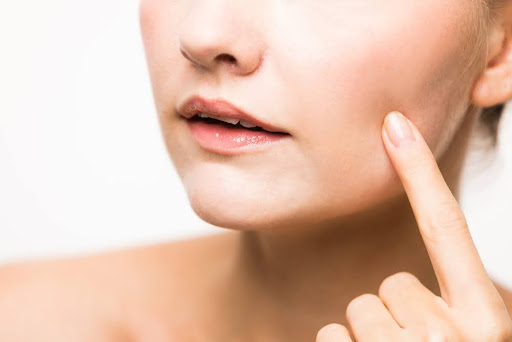Botox is well known for its role in cosmetic enhancements such as line-smoothing and wrinkle reduction. But did you know this injectable cosmetic treatment holds a lesser-known yet significant place in medical therapeutics?
Botox can effectively address various medical conditions, including Temporomandibular Joint Disorder (TMJ). When used to help treat the symptoms of TMJ, this use is known as masseter Botox or jaw Botox. If you are experiencing painful symptoms of teeth clenching and grinding, masseter Botox might be an effective solution.
In this article, we explore the diversity of Botox, focusing on its effectiveness as a treatment for TMJ. We’ll also discuss ways masseter Botox can enhance your face shape when injected into your masseter muscles.
What is the Masseter Muscle?
The Masseter muscle is a small (but very strong) muscle located at the sides of the face in the cheek area, spanning from the cheekbone to the lower jawbone. Each side of your jaw has a masseter muscle.
Functionally, the Masseter muscle plays a key role in bringing your teeth together during chewing and biting. This powerful muscle also contributes to other functions, such as clenching the jaw and assisting in speech production.
Given its important role in jaw movement, any dysfunction or tension in the Masseter muscle can lead to discomfort and impairment, particularly in conditions like TMJ. Additionally, while the masseter muscle primarily functions in jaw movement and chewing its size and strength can also influence the facial shape.
Overdevelopment or hypertrophy of the Masseter muscle, often seen in individuals who habitually clench or grind their teeth (Bruxism), can result in a square-shaped appearance to the jawline, sometimes referred to as “square jaw” or “masseteric hypertrophy.”
Conversely, weakening or atrophy of the Masseter muscle due to various factors such as disuse or certain medical conditions can contribute to changes in facial contour.
What is Masseter Botox?
Botox, short for botulinum toxin, is a neurotoxic protein derived from the bacterium Clostridium botulinum. When used in medical and cosmetic applications, Botox functions by temporarily paralyzing or weakening targeted muscles, thereby reducing their ability to contract. This allows for a range of applications, from treating chronic migraines to reducing the appearance of wrinkles. By blocking the release of acetylcholine, a neurotransmitter responsible for muscle activity, Botox effectively halts muscle activity at the injection site. This approach provides therapeutic and aesthetic benefits, making it a versatile tool in modern medicine and skincare.
Masseter Botox is the administration of Botox injections into the masseter muscle, typically at multiple points along its surface. The goal of masseter Botox is to weaken the activity of the masseter muscle, leading to relaxation and reduction in muscle tension.
Masseter Botox addresses various conditions stemming from overly contracted masseter muscles. These conditions encompass teeth grinding, clenching, jaw discomfort, and headaches. Masseter Botox is also utilized for aesthetic purposes, including non-surgical jaw reduction and facial slimming.
How Does Masseter Botox Treat TMJ?
Temporomandibular Joint Disorder (TMJ) is a condition that affects the jaw joint and surrounding muscles, causing pain, discomfort, and difficulty with jaw movement. TMJ can arise from various factors, including jaw injury, arthritis, teeth grinding (Bruxism), stress, or misalignment of the jaw joint.
The temporomandibular joint (TMJ) acts like a hinge, linking your jawbone to your skull and enabling essential movements like chewing, speaking, and yawning. When something goes wrong with this joint or the surrounding muscles, it can result in TMJ disorders. These issues can disrupt everyday life, turning simple actions like eating or talking into challenges.
There are various treatment options for TMJ, ranging from medications to trigger point injections, stress management techniques, and even surgery. Botox has emerged as a compelling alternative in recent years. Unlike traditional TMJ treatments, Botox offers a unique approach by targeting the masseter muscles, which play a significant role in jaw movement.
When injected into the masseter muscle, Botox works to relax the muscle and reduce its activity. By doing so, masseter Botox can alleviate muscle tension and spasms, providing relief from TMJ-related pain and discomfort.
How Long Does Botox for TMJ Last?
Botox for TMJ pain typically lasts three to six months, but this can vary from person to person. The effects gradually wear off as the body metabolizes the Botox, so additional injections are often needed to maintain relief. Some people may notice longer-lasting effects after multiple treatments, while others may require more frequent touch-ups.
Factors Affecting Duration
- Dosage: Higher doses may last longer, but they also increase the risk of side effects. Your doctor will determine the right balance based on your symptoms.
- Muscle activity: If your jaw muscles are very active due to clenching or grinding, Botox may wear off faster as the muscles work against the treatment.
- TMJ symptom severity: More severe cases may require more frequent injections or higher doses to maintain relief.
- Metabolism: People with faster metabolisms may break down Botox more quickly, reducing its duration. If you’re very active or have a high metabolic rate, you may need touch-ups sooner.
- Sun exposure: Excessive sun exposure can cause Botox to break down faster, so wearing sunscreen and avoiding prolonged direct sun exposure may help prolong results.
- Smoking: Smoking can decrease Botox’s effectiveness and cause it to wear off more quickly due to increased muscle tension and circulation changes.
Keeping TMJ Pain Under Control
While Botox can be a great tool for TMJ relief, it works best when combined with other treatments that address the root cause of jaw tension. Some options to consider:
- Physical therapy: Strengthening and stretching exercises can help relieve tension and improve jaw function.
- Relaxation techniques: Stress management, meditation, and jaw relaxation exercises can reduce clenching and grinding.
- Splints or oral devices: Night guards or custom dental appliances can help prevent excessive jaw movement and grinding, prolonging the effects of Botox.
What Else Can Masseter Botox Treat?
Botox can effectively alleviate the symptoms of various medical conditions and aesthetic concerns when injected into the masseter muscle.
Here are some of the most common reasons people get Masseter Botox:
Relief From Symptoms of Temporomandibular Disorders (TMDs)
Masseter Botox offers relief from the discomfort associated with temporomandibular disorders, which commonly includes TMJ symptoms such as jaw pain, facial discomfort, and limited mouth opening. By injecting Botox into the temporalis and masseter muscles, patients experience reduced pain and improved function, enhancing their oral health and well-being.
Reduction of Facial Pain and Tension
Masseter Botox contributes to reducing facial tension and pain, providing relief beyond the treatment of temporomandibular disorders. The relaxation induced in the masseter muscles helps alleviate excess stress and tension in the facial area, resulting in an overall improvement in facial pain and discomfort and enhancing patients’ quality of life.
Adjunct Treatment for Mandibular and Condylar Bone Fractures
Masseter Botox is an adjunct treatment for some mandibular and condylar bone fractures. Research suggests that injecting Botulinum Toxin Type A into the masseter and temporalis muscles after surgical reduction of these fractures can offer additional benefits to patients, aiding their recovery process and optimizing outcomes.
Reduction of Teeth Grinding (Bruxism)
Botox offers a simple yet effective solution for those struggling with sleep-related bruxism, a condition where teeth grinding or clenching during sleep can cause everything from jaw pain to significant dental issues over time. By specifically targeting the masseter and temporalis muscles, Botox works to reduce excessive muscle activity, effectively decreasing the intensity of the grinding and clenching motions. This not only protects the teeth but also provides relief from the often debilitating jaw pain and stiffness associated with bruxism. Many patients notice a significant improvement in their discomfort shortly after treatment, as Botox helps to relax overactive muscles, allowing the jaw to rest and recover.
Jawline Refinement and Facial Balance
Beyond its therapeutic benefits, masseter Botox is a non-surgical solution for refining the jawline and achieving a more balanced facial appearance. Creating a more defined and slim facial structure contributes to improved facial harmony and balance. The procedure can be complemented with other treatments like dermal fillers to further enhance facial aesthetics, providing patients with a comprehensive aesthetic solution.
Benefits of Masseter Botox
Whether you seek masseter Botox for the painful symptoms associated with TMJ or to enhance your jawline aesthetics, injecting Botox into the masseter muscle has many benefits.
Benefits of Masseter Botox include:
Direct TMJ Relief With Botox
If you’re dealing with TMJ pain and stiffness, Botox for TMJ relief could be the solution you’ve been looking for. This non-surgical treatment works by relaxing the masseter muscle, which is often the source of tension and discomfort.
No incisions, no anesthesia—just relief where you need it most. Many patients find that Botox not only eases their symptoms but also improves their overall quality of life, making daily activities more comfortable and stress-free.
Cost-Effective
Compared to surgical interventions or other invasive procedures, masseter Botox offers a cost-effective treatment option for patients seeking to enhance their facial appearance or alleviate jaw-related symptoms.
With relatively low treatment costs and minimal associated expenses, Botox injections provide an accessible solution to achieve your desired aesthetic goals or improve your quality of life.
Quick and Convenient
Masseter Botox offers a quick and convenient treatment option if you have a busy lifestyle. The procedure typically takes just a few minutes to administer, making it easily accessible for patients seeking efficient solutions to their jaw-related concerns or facial aesthetics.
With minimal downtime required, patients can resume their daily activities immediately after treatment, experiencing noticeable results in a relatively short period. This swift and hassle-free process makes Masseter Botox an excellent choice for those seeking effective and time-efficient solutions to their needs.
Minimal Discomfort and Downtime
Masseter Botox injections are virtually painless and require little to no downtime compared to more invasive procedures. Patients typically experience only mild discomfort during the injection process, with any temporary redness or swelling subsiding quickly afterward.
With no need for anesthesia or prolonged recovery periods, you can undergo masseter Botox treatment confidently, knowing you can quickly return to your normal activities without significant interruption.
Safe and Well-Established
Masseter Botox is a safe and well-established treatment option that has been extensively studied and utilized for various medical and aesthetic purposes.
With a proven safety and efficacy track record, Botox injections into the masseter muscles have become a routine procedure performed by trained healthcare professionals worldwide.
What to Expect Before, During, and After Masseter Botox for TMJ
Preparing for masseter Botox treatment follows a similar process to Botox injections in other facial areas. Before the procedure, your injector will conduct a thorough consultation to assess your medical history, discuss your treatment goals, and determine the appropriate amount and placement of injections.
If desired, a numbing cream can be applied to the treatment area to enhance comfort during the procedure. However, it’s worth noting that the needle used for Botox injections is very small, and most patients tolerate the injections well, even without numbing cream.
During the procedure, the injector will administer the Botox through a series of small injections into the masseter muscles. The injections are strategically placed to target specific areas of the muscle, effectively reducing its activity and relieving tension. The pain relief from these injections is especially noticeable for those dealing with conditions like bruxism or stress-related tension. By precisely targeting the right muscles with the appropriate dosage, this treatment can significantly reduce tension and offer lasting relief from discomfort.
Despite the multiple injections, the procedure is generally quick and relatively painless. Patients typically experience only mild discomfort, if any, during the injections.
Following the Masseter Botox treatment, you can expect minimal downtime. While some temporary redness or swelling at the injection sites may occur, these side effects typically resolve quickly. Patients can usually resume their normal activities immediately after the procedure, with no need for prolonged recovery or restrictions.
In terms of results, you should begin to notice improvements in their TMJ symptoms within a few days to a week after treatment. As the Botox takes effect and the masseter muscles relax, patients often experience reduced jaw pain, improved jaw function, and overall relief from TMJ-related discomfort.
Potential Side Effects of Botox for TMJ
While Botox is generally considered safe for treating TMJ-related pain, it’s important to be aware of possible side effects. Most people experience minimal discomfort or issues after receiving Botox injections for TMJ, but like any treatment, there are potential risks to consider.
Here are some of the common and less common side effects:
- Mild Pain or Swelling at the Injection Site
Some discomfort, such as mild swelling, bruising, or redness at the injection site, is typical. This usually goes away within a few hours to a day. - Headache or Migraine
Though Botox is often used to treat chronic headaches, some individuals may experience a headache as a side effect of the injection itself. This tends to resolve within a few days. - Temporary Muscle Weakness
Botox works by relaxing muscles, which can sometimes cause temporary weakness or difficulty chewing, especially if too much is injected in the wrong area. This should subside within a few days or weeks. - Drooping or Weakness in Facial Muscles
If Botox is injected too close to areas like the eyes or mouth, there is a slight risk of temporary drooping or weakness in the facial muscles. This can make it harder to smile or fully close your eyes, but it is rare and typically short-lived. - Allergic Reactions
In rare cases, some people might experience an allergic reaction to Botox. Symptoms can include itching, rash, or swelling. If you notice any of these symptoms, contact your healthcare provider immediately.
It’s essential to discuss your medical history and any concerns with your doctor before starting Botox treatments for TMJ. They’ll be able to assess your individual risk factors and ensure the procedure is right for you.
- Nerve injury or damage
There is a rare risk of temporary or, in very rare cases, permanent nerve damage. This could result in numbness, tingling, or changes in sensation in the treated area.
Overall, the benefits of Botox for TMJ often outweigh the risks, especially when performed by an experienced professional.
What are the Sustained Benefits of Botox Treatments for TMJ
The full effects of Masseter Botox treatment typically become apparent within two weeks post-procedure, with results lasting for several months before a touch-up is recommended. Regular maintenance treatments can help sustain the benefits of masseter Botox over time, allowing patients to enjoy long-term relief from TMJ symptoms and enhanced jaw comfort.
Who Should Get Masseter Botox for TMJ?
If you are bothered by jaw pain, tension, or difficulty with jaw movement due to TMJ, masseter Botox may provide relief by relaxing the overactive masseter muscles responsible for these symptoms. Additionally, if you want to refine and contour your jawline for a more balanced and harmonious facial appearance, masseter Botox can help achieve your aesthetic goals.
Candidates for masseter Botox should be in good overall health and have realistic expectations about the treatment outcomes. It’s essential to consult with a qualified healthcare provider to determine if masseter Botox is the right option for you and to discuss your individual needs and goals.
Is Masseter Botox for TMJ Safe?
Yes! Masseter Botox is not only effective but also safe. With FDA approvals and extensive studies spanning decades, Botox has established a remarkable track record of safety and efficacy. Countless individuals have trusted masseter Botox to address various conditions, including TMJ, teeth grinding, jaw pain, and headaches, with remarkable results and minimal risk.
It is important to acknowledge that, like any medical procedure, there are potential risks. These may include temporary side effects such as bruising, swelling, or muscle weakness at the injection site.
How Many Units of Botox Are Needed for TMJ Treatment?
The number of Botox units needed for TMJ treatment varies from person to person. There’s no one-size-fits-all dosage—your provider will determine the right amount based on your symptoms, muscle strength, and treatment goals. The key is to relax the jaw muscles enough to relieve tension and pain without limiting movement too much.
Factors That Affect Botox Dosage for TMJ
Several factors influence how much Botox you might need:
- Masseter Muscle Size: Larger or more developed jaw muscles may require a higher dosage.
- Clenching and Grinding Severity: If you grind or clench your teeth frequently, your muscles may be stronger and need more units to relax.
- Facial Structure: The placement and strength of your jaw muscles vary from person to person, affecting the ideal dose.
- Treatment History: If you’ve had Botox before, your provider may adjust the dosage based on how long the effects lasted and how well it worked.
Typical Botox Dosage for TMJ
While the exact number varies, here’s a general breakdown:
- Masseter Muscle (Jawline): Typically, 20 to 40 units per side.
- Temporalis Muscle (Temple Area): Some patients receive additional Botox here to relieve tension headaches, usually 10 to 20 units per side.
- Frontalis Muscle (Forehead): In some cases, Botox is used here to help with tension-related headaches or facial pain.
How Providers Customize TMJ Treatment
A skilled provider will evaluate your jaw movement, muscle tightness, and pain levels to determine the right dosage. Some start with a lower amount and adjust in future treatments based on how your muscles respond. The goal is to reduce pain and tension while keeping your jaw function natural and comfortable.
If you’re considering Botox for TMJ, scheduling a consultation with an experienced provider is the best way to get a treatment plan tailored to your needs.
How Much Does Masseter Botox for TMJ Cost?
The cost of Masseter Botox can fluctuate depending on several factors, including the number of injection sites and the quantity of product administered. Additionally, pricing per unit may vary depending on geographical location and the pricing structure of the practitioner. Some practitioners charge based on units of neuromodulator, while others may have distinct fees for different facial areas.
Is Masseter Botox for TMJ Covered by Insurance?
Insurance coverage for Botox as a TMJ treatment varies depending on your provider and specific plan. While some insurance companies may cover it when deemed medically necessary, others might not. The best way to find out is to check directly with your insurance provider and review your policy’s guidelines.
Factors That Affect Coverage:
- Medical necessity: Insurance is more likely to cover Botox for TMJ if you have a documented medical need, such as chronic jaw pain, headaches, or myofascial pain syndrome. Your doctor may need to provide records showing that other treatments haven’t worked.
- Your insurance plan: Some plans cover injectable treatments under medical benefits, while others classify Botox as a cosmetic procedure and exclude it. It’s important to verify whether your plan includes coverage for therapeutic Botox.
- Other treatment options: Insurance may require you to try other TMJ treatments—like physical therapy, mouth guards, or medications—before approving Botox. If you’ve already attempted these treatments with little success, make sure your doctor documents it for insurance purposes.
- Pre-authorization requirements: Some insurance providers require pre-authorization before covering Botox for TMJ. This means your doctor must submit paperwork proving that the treatment is medically necessary.
How to Check if You’re Covered:
- Review your insurance policy or benefits guide. Look for sections on “injectable treatments” or “TMJ disorders” to see if Botox is mentioned.
- Call your insurance provider. Ask directly whether Botox for TMJ is covered under your plan, what documentation is needed, and if there are any out-of-pocket costs.
- If required, get pre-authorization from your healthcare provider. This process can take time, so it’s best to start early. Your doctor’s office may be able to handle the paperwork for you.
- Gather necessary medical documentation. This includes records of previous treatments, a TMJ diagnosis, and notes from your doctor explaining why Botox is necessary for your condition.
- If coverage is denied, consider filing an appeal. Work with your doctor to submit an appeal with additional supporting documents, such as specialist recommendations or studies backing Botox as a medical treatment for TMJ.
Alternative Payment Options
If insurance doesn’t cover Botox for TMJ, there are still ways to make the treatment more affordable:
- Flexible Spending Account (FSA) or Health Savings Account (HSA): These accounts allow you to use pre-tax dollars for medical expenses, including Botox if deemed medically necessary.
- Payment plans through your provider: Some doctors or medical spas offer financing or installment plans to spread out the cost over time.
- Manufacturer savings programs: Botox manufacturer Allergan sometimes offers discounts or reimbursement programs for eligible patients. Check their website or ask your provider about available options.
Where to Get Masseter Botox for TMJ Treatment?
When considering masseter Botox treatment, seeking out a reputable med spa or aesthetic clinic with experienced injectors who are knowledgeable about facial anatomy and skilled in administering Botox injections is crucial. Choosing a qualified provider ensures that you receive safe and effective treatment tailored to your specific needs and goals.
Experienced injectors understand the intricate anatomy of the face, including the structure and function of the masseter muscles. They can accurately assess your jawline and TMJ concerns, determine the optimal placement and dosage of Botox injections, and minimize the risk of complications.
Moreover, establishments with experienced injectors prioritize patient safety and satisfaction. They adhere to strict hygiene standards and use high-quality Botox products to ensure optimal results. By choosing a reputable med spa with experienced injectors, you can feel confident in the quality and safety of your masseter Botox treatment.
It’s essential to research potential providers, read reviews, and schedule consultations to ensure you select a trusted establishment that prioritizes your well-being and delivers exceptional results.
Schedule a Consultation at Relive for Masseter Botox for TMJ
At Relive Health, we are a trusted provider of medical aesthetics. Our goal is to offer innovative services that meet the unique needs of our clients, helping them achieve optimal health and vitality.
We have multiple health centers located throughout the United States, where we provide advanced medical aesthetics, including masseter Botox.
If you’re interested in finding a Relive Health center near you, click here.




